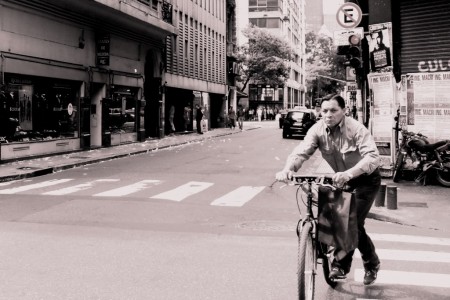Kamathipura – Mumbai’s infamous Red Light District
The homes in the slums are rows and rows of lean-to with tattered, dusty, discolored plastic laid across the top for shelter. The tattered remains of a tarp is secured by rotten, discarded pieces of wood used as weight at the corners. The average size of the inside of this dwelling is about 4 ft deep x 6 ft wide, by 5 ft tall; an entire family resides here. The structure is a place that is too small to stand in, not wide enough to lie in, and scarcely light enough to want to sit in.
Some of the walls are tiled with ceramic designs that betrayed their age; most of them are recolored by age, soot, and grime; and others are just plain unrecognizable. Dusty, cavalier children run around lithely and noisely in the littered, dirt road. There is no vehicular traffic in here, only pedestrians, and dogs. Makeshift beds form rows like a make-shift military hospital during war-time. An oblong, iron frame with a basket-weave mat made of brown fibrous yarn serves as the mattress. The fibers are sturdily interwoven and secured to the frame at the four corners.
The homes are too small to accommodate these put-together beds, so they are placed in the street. Gaunt, emaciated, wrinkled people lie prostrate on the beds which are arranged hap-hazardly, like the border print on a cheap Mexican shawl. There are one, sometimes two inhabitants per bed; occasionally the mother and child sleep on the bed, uncovered, while a male figure sleeps on the street beside them.
Flies assemble indolently overhead, taking a rest every now and then on everything immobile; they hover, linger, and circle, reveling in nature’s languidity and rancor.
Litter, personal miscellany and unused construction bits arbitrarily decorate the street, creating a monochromatic background wash that accentuates the multi-colored dresses of the limp bodies. Along the moss-covered walls of the Victorian-style buildings, vividly-colored clothing flapped and fluttered in the mid-afternoon wind that rushed around trying to cool the surface of every scorched façade.
Out of every dank, open doorway, the rhythmic percussive tones of Lavani (popular folk music of Maharashtra) and Punjabi fusion pulsates, anchoring their basal tones unto the hot afternoon vapor as it rises slowly to meet the cool austerity of the upper ozone layers. The air is thick, belaboured by the unglamorous stench of filth, decay, and cooking food that pervades. Through every open doorway drifts an inviting, and almost imperceptible perfumed whiff of a nebulous, unidentifiable scent of incense, made known only by the somnolent crawl of the accompanying smoke as it curls curiously around ajar doors.
As we walked slowly through the streets, I am aware of the hub and stir and curious gazes cast from behind the security of flimsy drawn curtains. Hushed, urgent voices can be heard behind cardboard constructions as the occupants discuss the approach of ‘the social workers and the stranger in white.’ In India, the colour white is symbolic of higher authority, and brings fear to the hearts of the penitent. The Commercial Sex Workers (CSW), residents of the red light district, are considered the untouchables in the Indian society, deviant and impious; that knowledge instills contrition in their minds.
Kamathipura is one of the main districts of Mumbai’s red light district. Several clients are sometimes housed in one building as the women in this trade all reside within this area and are housed either in the brothels run by the eunuchs, or else they live together in a room and pay the rent to the landlord who invariably, is also employed in the trade; in a few cases, this person would serve as the Madamme of the home, the one who assures the safety of the inhabitant, if only for the simple reason of ensuing that she continues to receive her monthly livelihood, the rent.
A dark, dilapidated, narrow, filthy passageway leads to their rooms. The common area is the single-file corridor in the center of which sits a pot perched atop a fire made of coals. Meals are arranged in turn as this central fireplace services most of the residents on this floor of the building. There are about ten rooms on the floor; each room will house approximately five families, the division of ownership is made by hammocks or cupboards; very often it is invisible.
The hammock is made of a flimsy, fibrous straw which is scarcely long enough to accommodate a full-sized body; often the woman is seen nestled in it with a baby. Pots, pans and other personal accoutrement are attached to the hammock, which is secured at its two ends to the post of a bed. The bed which is above the hammock, serves as an assigned ‘house’ of another family.
The size of the cupboard is approximately three feet high, four feet wide, and perhaps eighteen inches deep. There is no door, and nothing inside except a person who sits inside until it is their time to cook, bathe or perform some bodily function. The space is enough for an occupant to sit only the fetal position, a sight which I witnessed on one previous visit; it was reminiscent of the rishis and the yogis under the famous Bodhi tree.
One family resides in the area above the cupboard, which is nothing more than a surface area the length and width of the cupboard, and the area below is occupied by another family. Inside the cupboard, one member sits perhaps all day waiting for night to fall to begin ‘work,’ or for her turn to cook her meal. A combined ‘bath’ area serves for all biological functions, and is used by everyone on that floor. The cupboard in each room, which is in plain view of every occupant, is used as the ‘work-area’ for all the CSW when they are conducting their ‘work’ activity with clients.
A thin sheet covers the wood surface in preparation for ‘work,’ which begins in a few hours. This area is the size of an examination table in a Pediatrician’s office, and the sheet used here is about as thin as the paper that is typically used in medical practise. To be allowed to occupy these ‘spaces’ in these ‘homes,’ these residents pay a princely sum of ninety rupees monthly, the equivalent of $1.76US. But considering that each trick gains them ten rupees, if they are pretty enough, and have decorated themselves enough to appear attravtice, all of which will reduce the coffers, then ninety rupees monthly can be a king’s ransom.

More Stories
Glissandi on the Arabian Sea
The Queen's Necklace. The pseudonym for the string of lights that decorate Marine Drive along the Arabian Sea, in Mumbai,...
For a few dollars more
Women in the Red Light District, Mumbai, India (image deliberately distorted to preserve identity) A thin blue sheet covers the...


Average Rating